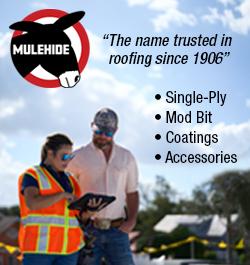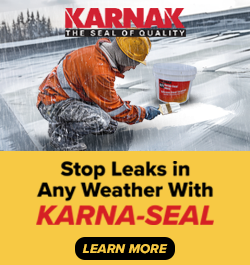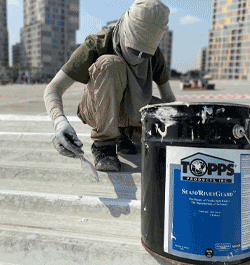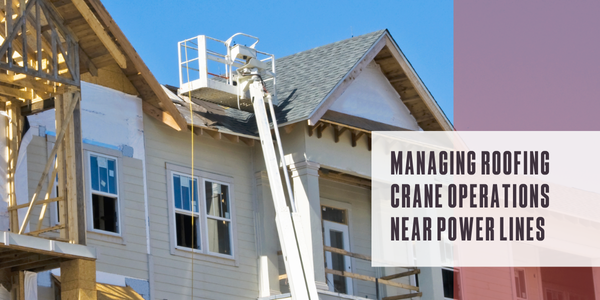UP TO THE MINUTE
Best practices for roofing contractors in hazard communication

By Cotney Consulting Group.
A commitment to excellence in hazard communication is not just good practice — it's good business.
As roofing contractors, we navigate an environment bristling with potential hazards, from the risks of falls to the subtler, equally perilous dangers posed by the daily materials. At the heart of safeguarding our teams from these threats lies a robust Hazard Communication Program (HazCom). However, data from the Occupational Safety and Health Administration (OSHA) presents a sobering reality: Hazard Communication (HazCom) consistently ranks within the top ten violations nationwide. This is not just a statistic—it's a stark reminder of the potential gaps in our safety practices. So, is your Hazard Communication Program merely a formality, or is it a living system actively contributing to a culture of safety? In this article, we'll dissect the crucial components of an effective HazCom Program, ensuring that your practices are compliant and effective.
The standard and responsible staff
The foundation of any Hazard Communication Program is the OSHA's Hazard Communication Standard (HCS), also known as the "Right-to-Know" law. This standard mandates that the hazards of all chemicals produced or imported are classified and that information concerning the classified hazards is communicated to employers and employees. Compliance begins with understanding and properly implementing this standard. Assigning a dedicated team or staff member responsible for the HazCom Program is paramount. This individual or team should be well-versed in the HCS and should act as the point of contact for all hazard communication issues within your company. Their role includes staying current on regulation changes, managing documentation and ensuring all communication channels regarding hazardous materials are open and effective.
The written hazard communication program
A Written Hazard Communication Program is not just a requirement but the playbook by which you ensure all aspects of hazard communication are understood and implemented consistently. This document should clearly articulate the process for handling hazardous materials, detail the labeling system, explain the procedure for accessing Safety Data Sheets (SDSs) and outline the employee training plan. For roofing contractors, this means ensuring that the program is tailored to the unique risks associated with roofing materials and processes. A generic HazCom program won't cut it; the document needs to account for the myriad of products like asphalt, solvents and adhesives used in roofing, which may pose significant hazards if not properly managed.
Container labels
One of the most visible aspects of the Hazard Communication Program is the labeling of containers. OSHA requires that each container of hazardous chemicals in the workplace be labeled, tagged, or marked with the identity of the hazardous chemical, appropriate hazard warnings and the name and address of the chemical manufacturer, importer, or other responsible parties. As a roofing contractor, your job sites are dynamic, with materials constantly being used, moved and replenished. It's essential to establish and maintain a stringent labeling system. Labels must be legible, in English (and possibly other languages spoken by your workforce) and resistant to the environmental conditions of your job sites. Overlooking this aspect can lead to misuse of materials and potential accidents.
Safety data sheets
Safety Data Sheets (SDSs) are the encyclopedic backbone of hazard communication, providing detailed information on each chemical substance or mixture. Roofing contractors must ensure that SDSs are readily available for all hazardous chemicals they house. These data sheets must be accessible to all employees at all times in their work area without barriers. They serve not just as a compliance requirement but as a critical resource for workers to understand the potential hazards and proper handling of materials they encounter on the job.
Employee training
The effectiveness of your Hazard Communication Program hinges on employee training. Roofing contractors must provide training that ensures workers are not only aware of the chemical hazards to which they are exposed but also competent in safely handling these materials, understanding labeling systems and proficient in using SDSs. Training must be comprehensive, engaging and, most importantly, ongoing. It should not be a one-off event but a continuous process that includes updates on new hazards or changes to safety practices. It's the difference between a merely informed workforce and one empowered to act safely and decisively.
Program evaluation
Finally, the evaluation of your Hazard Communication Program is what determines its long-term success. It should not be a static document but a living program that evolves. Regularly reviewing and updating your HazCom can identify areas of non-compliance for improvement and ensure the program grows with your business. It adapts to any changes in operations or personnel. Remember, an effective HazCom Program does not simply meet the regulatory requirements but ingrains safe handling of hazardous materials into the fabric of your company culture.
An effective Hazard Communication Program is a regulatory obligation and a cornerstone of workplace safety in the roofing industry. It should be seen as a dynamic tool, sharpened by continuous learning and adaptation, that not only safeguards the health and well-being of your team but also contributes to the efficiency and reputation of your business. By rigorously implementing each component — from assigning knowledgeable staff and crafting a detailed written plan to ensuring accurate labeling, accessible Safety Data Sheets and thorough employee training — you're building an environment of awareness and prevention. Moreover, by regularly evaluating and refining your program, you transform it from a static set of guidelines to a proactive safety net that evolves with technological advances and the ever-changing tapestry of the workplace. Ultimately, the true measure of your Hazard Communication Program's success will be reflected in a workplace that champions safety, minimizes hazards and fosters a culture where every team member is equipped with the knowledge and confidence to perform their duties effectively and safely. This commitment to excellence in hazard communication is not just good practice — it's good business.
Learn more about Cotney Consulting Group in their Coffee Shop Directory or visit www.cotneyconsulting.com.





















Comments
Leave a Reply
Have an account? Login to leave a comment!
Sign In